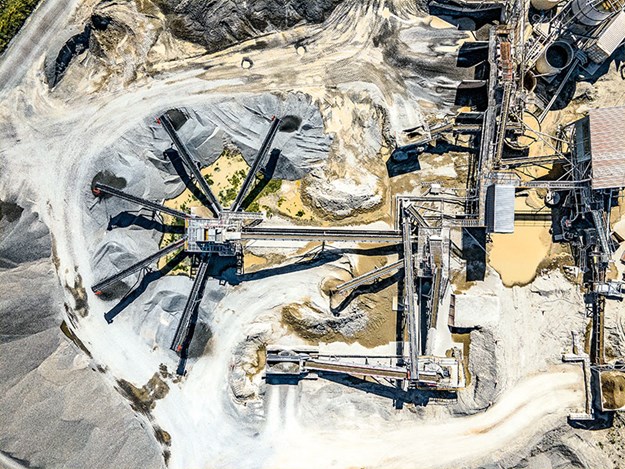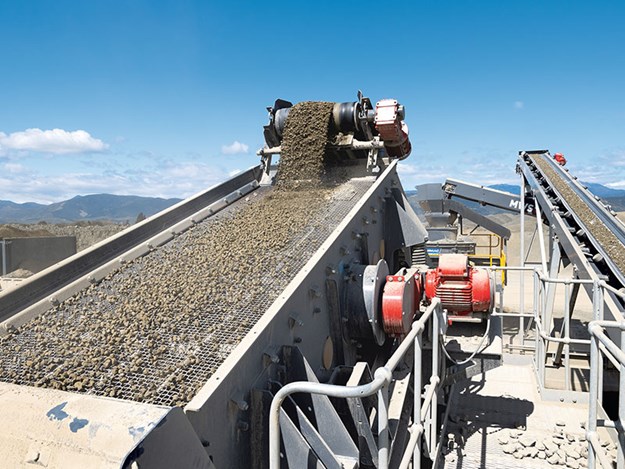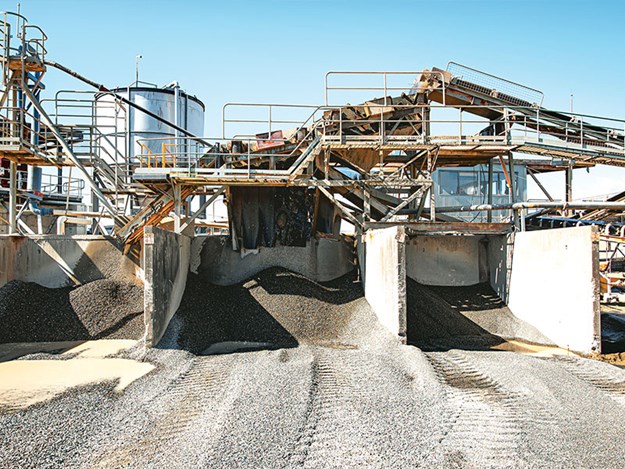Case study: The Appleby Plant
Fulton Hogan selected Equip2 to supply a new crushing plant for their Nelson quarry. Deals on Wheels takes a look at stage one—the Chip Plant upgrade.
Fulton Hogan in Nelson New Zealand is one of the largest development companies in the country. To feed their high demand for aggregates with projects such as roading and dam construction, they recently upgraded their Chip Plant.
The business needs no introduction; alongside their well-known roading and infrastructure arms, Fulton Hogan is also one of the biggest aggregate-producing operations in New Zealand. With dozens of quarries across the country (some have been established for more than 50 years), equipment inevitably needs updating to keep pace with demand.
The plant upgrade
 |
|
The final completed MWS Chip Plant consisted of a feed hopper, Barmac, double-deck dry screen with a flow divider, a triple-deck wash screen, and dual-split dewatering screen
|
Fulton Hogan’s Appleby Chip and Concrete Ag Plant located outside of Nelson was one such plant that was on the radar for improvement. Appleby was built as a static plant more than 40 years ago and has over time been incrementally upgraded. Still, the underlying platform was ageing and was showing some process bottlenecks and increasing R&M costs.
The question was not if it needed upgrading, but who and what supplier would be able to provide an ideal solution that met Fulton Hogan’s business case. Due to the importance of the plant’s ongoing production, upgrading all the equipment would take place in stages to mitigate production loss and the flow-on effect it would have on the company’s projects.
Two key parts
 |
|
The new plant supplied by Equip2 has increased production significantly
|
There were two key parts to Appleby’s static production equipment: the Chip Plant and the Concrete Ag and Sands Plant, both of which were interconnected.
Rather than undertake a complete upgrade, which would take longer, with a staged rollout, one plant could continue production while the other was replaced.
With the decision made to upgrade in two separate stages, the first selected was the Chip Plant upgrade and stage two would focus on the Concrete Ag and Sands Plant at a later date.
Chip plant requirements
 |
|
Equip2’s solution revolved around an MWS modular plant, which is customisable according to what a quarry needs
|
As part of the planning and investment process, Fulton Hogan’s local Nelson office prepared a business case that defined exactly what would be required from a new plant.
Fulton Hogan’s quarries divisional manager James Blacklaws led the planning and tendering of the project. With experience in both the planning and commissioning of static and mobile quarrying equipment, he outlined seven critical requirements for a successful new chip plant.
Supplier selection
 |
|
Left: James Blacklaws Right: Troy Adamson
|
Fulton Hogan sought proposals from major suppliers in New Zealand and Australia, capable of supplying a chip plant that met their needs. The tender and proposal process necessitated a thorough review of each solution and how each supplier would ensure it would meet expectations. In the end, Equip2’s chip plant solution was selected, as it met the key criteria listed, which not all proposed solutions could.
James and Fulton Hogan also factored in that COVID had heightened their awareness of working with New Zealand-based businesses, as restrictions had meant that internationally based businesses would not be able to support the plant due to ongoing restrictions.
The right solution
 |
|
The plant arrived in 11 containers and was fully assembled in just 12 days
|
Equip2’s solution revolved around an MWS modular plant, which is customisable according to what a quarry needs but utilises proven components, a faster build time, and standardised parts for easier servicing and availability.
Designed to ‘bolt together’, a modular quarrying plant enables flexibility without the high cost of engineering and troubleshooting that may follow. Fulton Hogan only needed to involve an engineer to build the concrete platforms.
Following on from consultations with Fulton Hogan, Equip2 and MWS put together the equipment plan and CAD modelling of the plant to be installed at Appleby. This aided Fulton Hogan’s quarry management to see how the plant would exactly fit on the site.
Project execution
 |
|
The dry circuit, consisting of a Barmac and double-deck screen, used to produce crusher dust
|
While planning the project, James involved Fulton Hogan quarries’ resource project manager Troy Adamson, who would lead the on-site works and commissioning.
Meeting with Bert Hart from Equip2, James and Troy formulated a plan to stockpile as many chip products as possible to prevent projects from backing up; a loss of production, although undesirable, was expected during the upgrade of the plant.
Beginning the process, the original Chip Plant was disassembled with belts recycled into liners and the steel structure and componentry were either reused or sent for recycling; little of the original plant went to landfill.
The aforementioned concrete platforms were laid, ready for Equip2 to assemble the MWS Plant. The plant arrived in 11 containers and was fully assembled in just 12 days, with the remaining part of the commissioning—wiring and piping—looked after by Fulton Hogan.
James, who has managed many builds for Fulton Hogan, installed a timelapse camera to aid post-reporting.
Thanks to thorough preparation and planning by James and Troy, the decommissioning and build of the new plant proceeded without any hang-ups and was ahead of schedule.
Earlier productivity
 |
|
The innovative set-up has met and surpassed initial expectations
|
With the MWS Chip Plant assembly complete, Fulton Hogan could start using the dry circuit, consisting of a Barmac and double-deck screen to produce crusher dust, while the rest of the plant was plumbed and wired into the control tower.
The operational dry circuit helped restore revenue and productivity earlier, providing extra value while the rest of the plant was completed.
Stage one Chip Plant project conclusion
 |
|
The decommissioning and build of the new plant proceeded without any hang-ups and was ahead of schedule
|
The final completed MWS Chip Plant consisted of a feed hopper, Barmac, double-deck dry screen with a flow divider, a triple-deck wash screen, and dual-split dewatering screen. The innovative set-up has met and surpassed initial expectations in six critical areas.
Equip2 says their business can help other aggregate suppliers achieve full or partial plant upgrades to help increase production targets and reduce repair and maintenance costs.
For more information, visit equip2.co.nz.
Find new and used heavy machinery for sale in NZ
Keep up to date in the industry by signing up to Deals on Wheels' free newsletter or liking us on Facebook.





.jpg)

.jpg)
.jpg)
.jpg)
.jpg)
.jpg)
.jpg)

